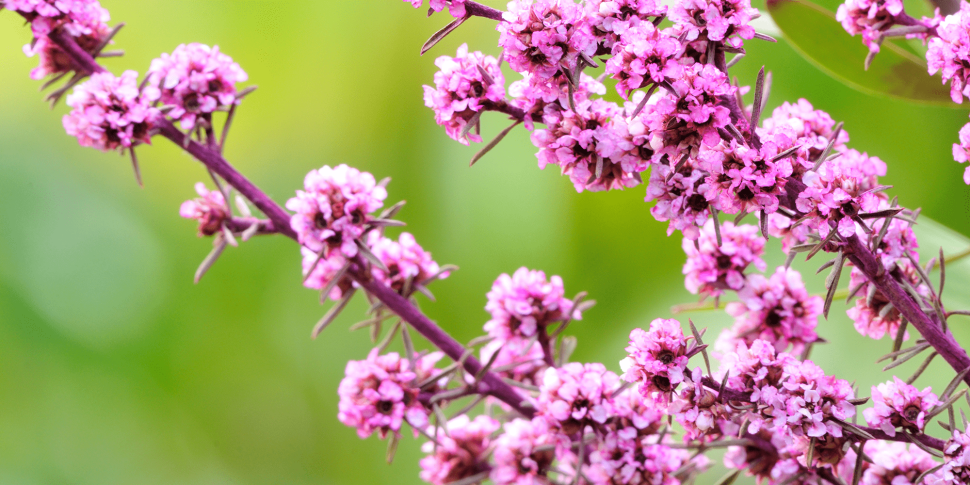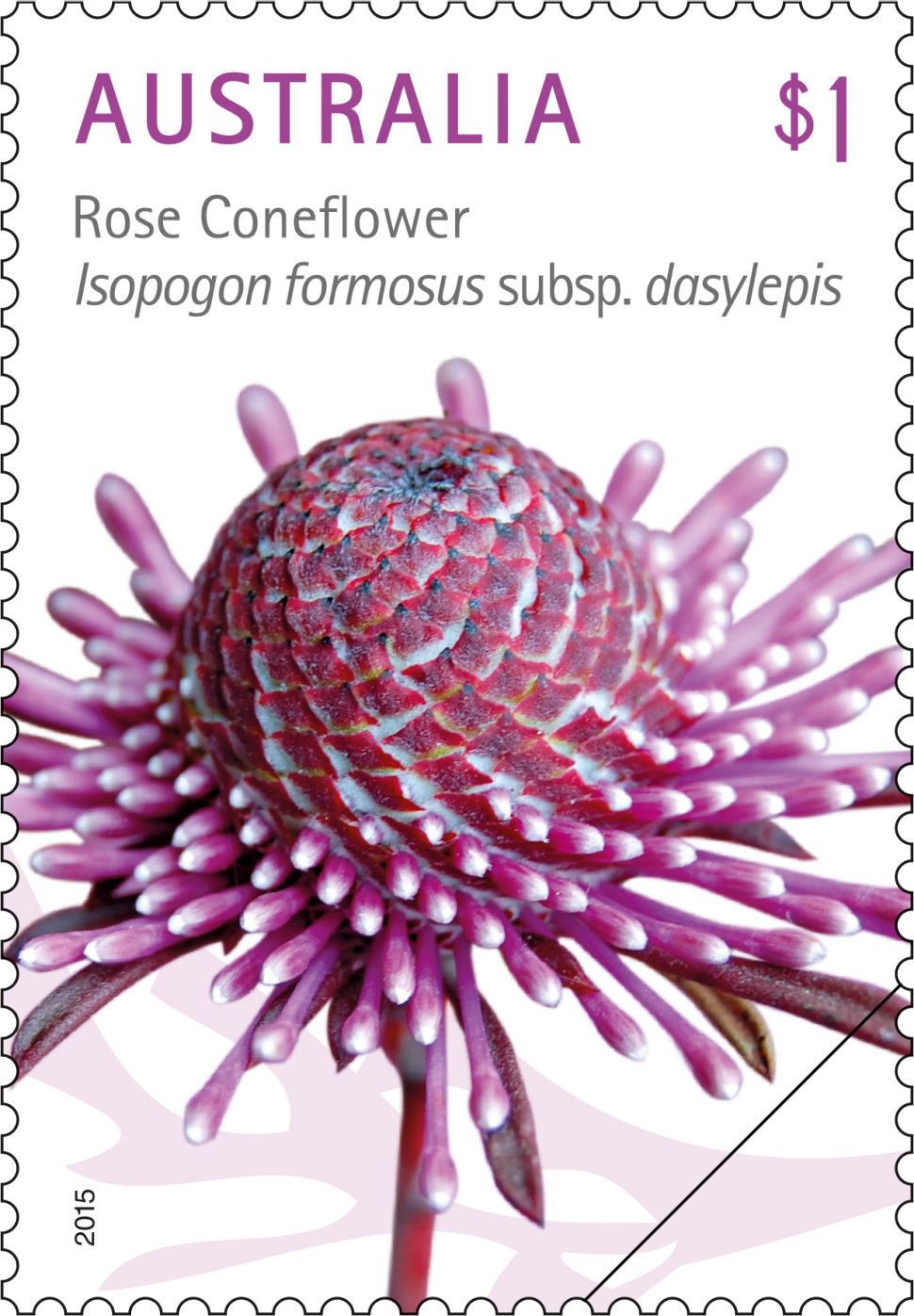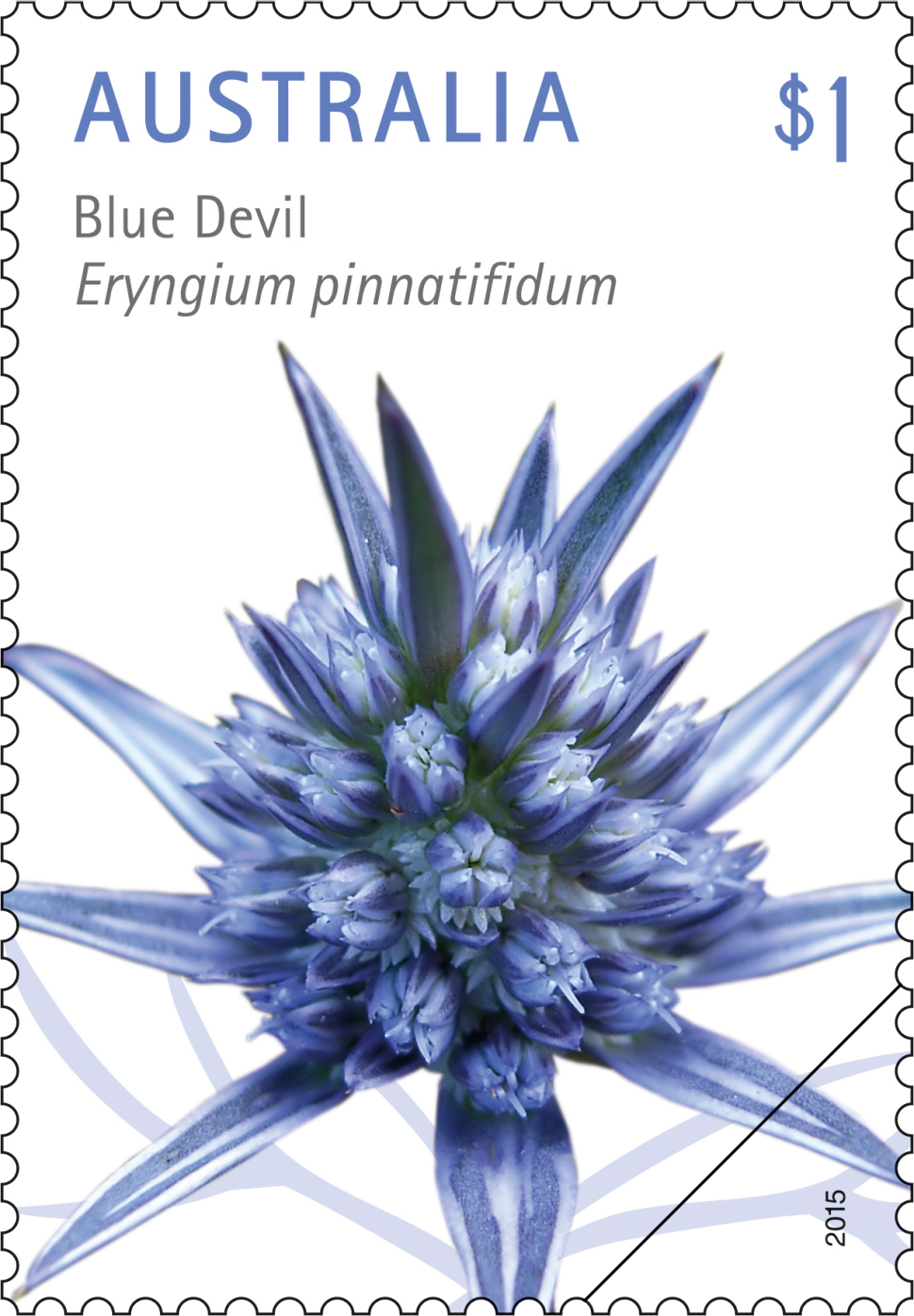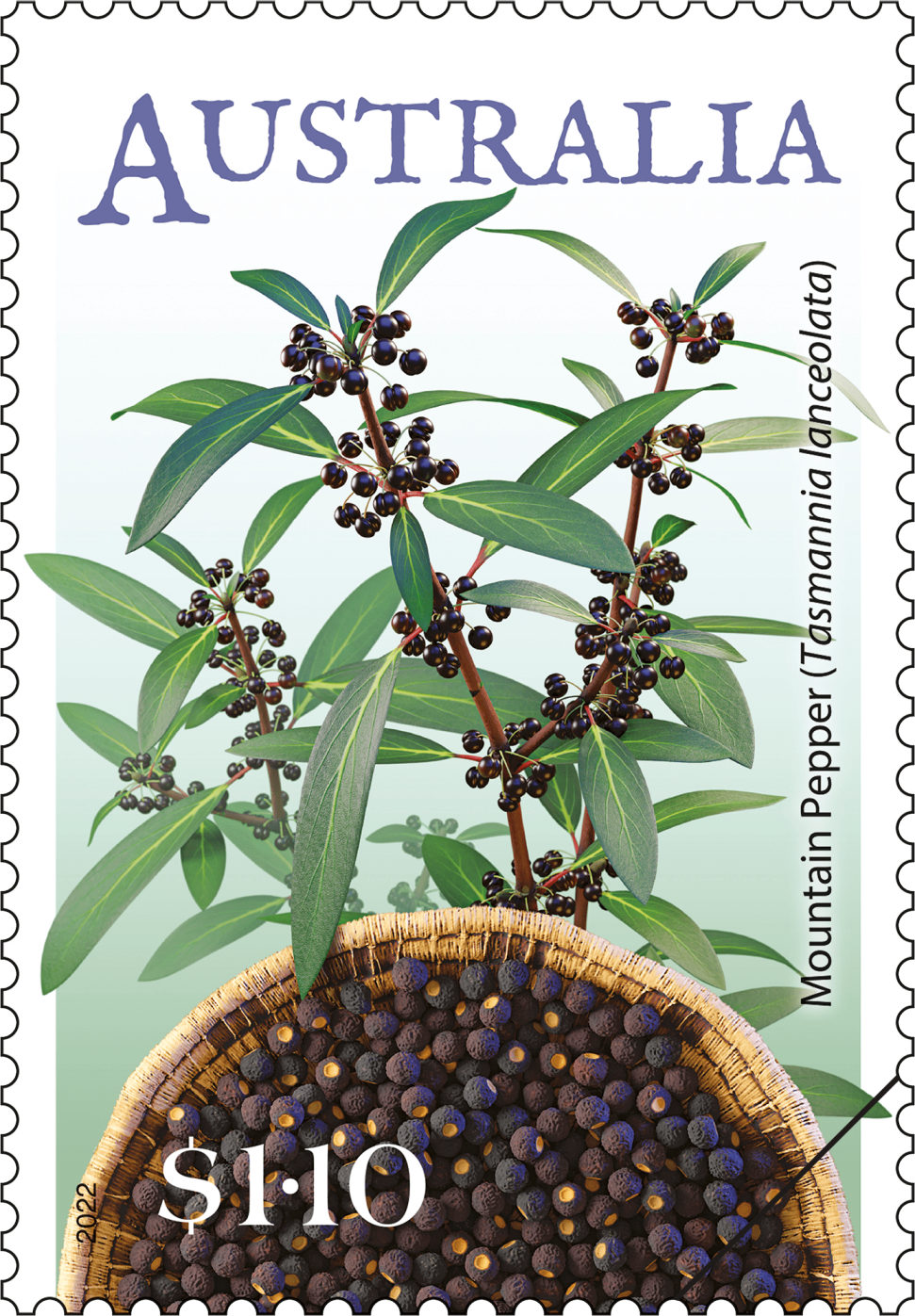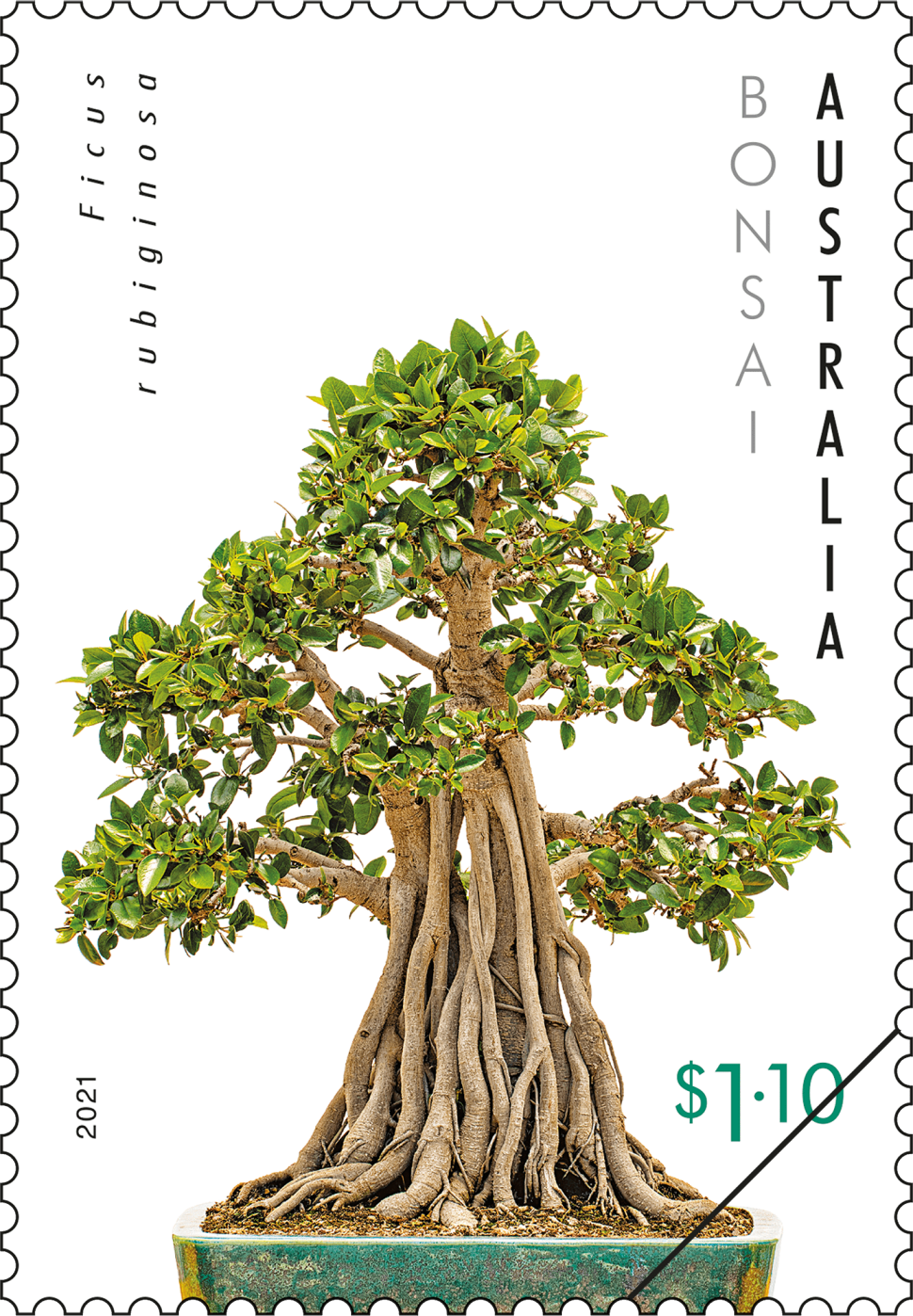There are around 20,000 species of flowering plants native to Australia, grouped into about 200 families. Australia’s centrepiece for wildflowers is the botanically rich Western Australia, particularly the state’s south-west. The state’s remarkable range of wildflower species, numbering around 10,000, is the result of isolation from eastern Australia and a temperate climate; some 60 per cent of wildflowers occurring Western Australia occur nowhere else.
The wildflowers are in bloom mainly from June to November and carpet a range of environments. It is thought that more than 775,000 visitors each year are drawn to visit Western Australia’s wildflowers. Areas of very high floral biodiversity include Stirling Range National Park, Fitzgerald River National Park, Lesueur National Park, and even the environment around Perth. The four species shown in the stamp designs all occur in the south-west of Western Australia.
The stamps feature tightly cropped blooms on largely white backgrounds, highlighting distinctive form and beauty of each species. Stylised foliage, with the leaves relevant to each species, is featured behind the blooms, to add both visual interest and as a nod to botanical art and to the method of identifying botanical species.
Products in this issue
- Stamps (3 x $1, 1 x $2)
- Covers (pictorial and first day gummed)
- Stamp pack
- Maxicards
- Booklet of 10 x $1 stamps
- Booklet of 20 x $1 stamps
- Roll of 100 x $1 stamps
- Roll of 200 x $1 stamps
- Medallion cover
Technical specifications
- Issue date
- 14 December 2015
- Issue withdrawal date
- TBA
- Denominations
- 3 x $1, 1 x $2, se-tenant triple
- Stamp design
- Simone Sakinofsky, Australia Post Design Studio
- Product design
- Simone Sakinofsky, Australia Post Design Studio
- Printer - gummed
- McKellar
- Paper - gummed
- Tullis Russell
- Paper - self-adhesive
- C100
- Paper (rolls)
- SCBG40
- Printing process
- Offset lithography (Flexographic)
- Stamp size
- 26mm x 37.5mm
- Perforations
- 14.60 x 13.86
- Sheet layout
- Module of 50
- FDI postmark
- Botany, NSW 2019
- FDI withdrawal date
- 14 February 2016
This subspecies of Isopogon is a low, bushy or slender, upright shrub that grows between 20 centimetres and two metres high, with compact, divided foliage that has pointed tips. Flowering in winter and spring, from June to December, its bright pink to magenta flowers begin as tight globular cones and open to around six centimetres in diameter. It prefers sandy clay and gravelly sandy soils over laterite, though it is often found in swampy areas, and grows in the south-west of Western Australia.
First described by Alexander von Bunge in 1854, this perennial herb grows from 20 to 50 centimetres high, with its prickly, divided foliage occurring along thin branches. The bold purple-blue or white bloom is a little pineapple-like in shape, with spiked “petals” protruding from the flower head; it blooms from August to November. Preferring clay, sandy clay and peaty sand soils, Blue Devil occurs mainly from Geraldton south to Albany and in the Avon Wheatbelt.
Spiny Mirbelia is an erect or ascending spiny shrub that grows from 20 centimetres to 1.5 metres. It has short, densely clustered oblong leaves, and its pea-like yellow-and-orange to red/brown flowers cluster along its branches. This hardy species prefers sandy soils and rocky sites. It blooms from June through to November and it occurs in the south-west and the Avon Wheatbelt regions.
The delicate Golden Rainbow is a perennial tubular herb that grows to between 10 and 40 centimetres high. It prefers laterite and sandy soils and often can be found on rocky outcrops in the south-west of the state. Flowering from June to September, this species’ red inner petals are encircled by golden petals.
This content was produced at the time of the stamp issue release date and will not be updated.
